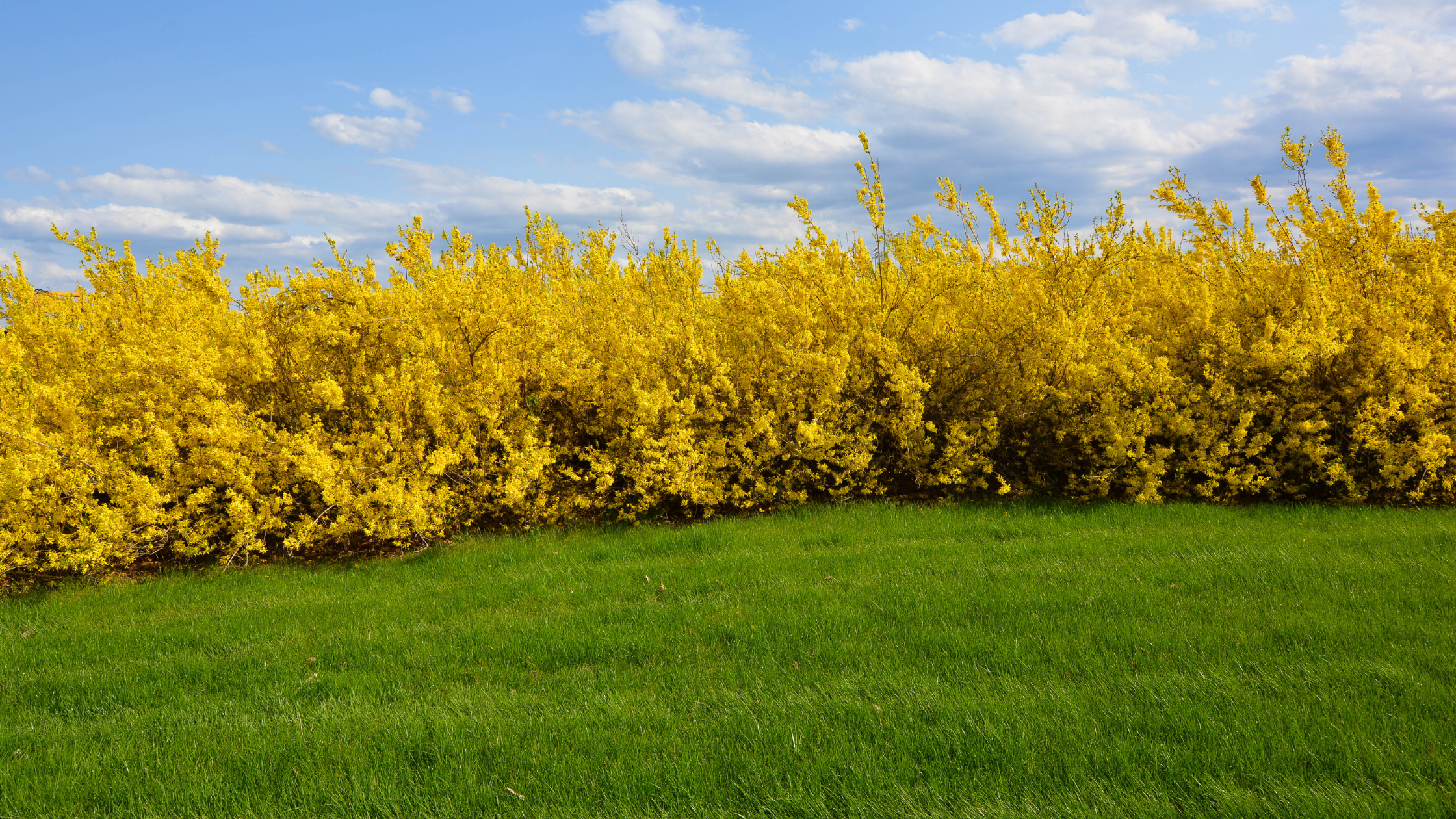A very common misconception is that crabgrass pre-emergent barriers need to be in place by the time that forsythia blooms. The feeling is that forsythia bloom marks the beginning of spring and thus also indicates the start of crabgrass germination.
Does Forsythia Actually Predict Crabgrass Germination?
It is true that forsythia is among the first plants to bloom in the spring and given its very vibrant yellow flowers, serves as a very obvious mark of warming weather. It is also true that crabgrass seeds can start germinating relatively soon after spring has officially sprung. The relationship between the two is there, but the timing is not.
Crabgrass and Growing Degree Days
The thing that really determines both forsythia bloom and crabgrass germination is Growing Degree Days (GDDs). A whole blog post can be written about GDDs, but for the sake of this post, all you need to know is that GDDs is a standardized way to quantify cumulative temperature over time relative to a “developmental threshold” (a fancy word for a baseline, typically 50 degrees Fahrenheit). As a quick example, imagine a day where the average temperature is 65 degrees (think high of 75 and a low of 55). In GDD terms, that day represents 15 Growing Degree Days (65 – 50). If the next day averages 60 degrees (10 GDDs), we now have accumulated 25 GDDs.
This measurement classification is helpful because all sorts of horticulture and pest management activities are associated with certain GDD thresholds. Forsythia bloom, for example, happens from 1-25 GDDs (ie. very early in spring). Crabgrass, on the other hand, does not begin to germinate until ~200 GDDs. With average temperatures in April hovering close to 50 degrees, it can be weeks before we reach 200 GDDs, if not longer!
This is why forsythia bloom is not a good indicator of crabgrass germination. But, if you are still concerned about getting the crabgrass barriers up, fear not. The pre-emergent barriers Mainely Grass uses have both pre AND post-emergent qualities ensuring that the barrier is maximally effective throughout the spring and into the early summer. Enjoy the forsythia bloom and a crabgrass-free lawn this spring!
